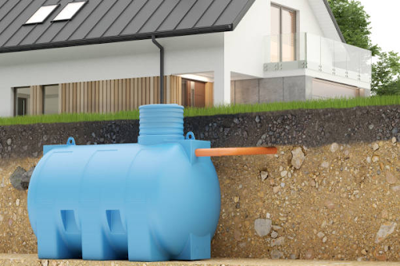
A septic system plays a vital role in managing wastewater, especially in rural or suburban areas where access to municipal sewer lines is limited. It is a self-contained system designed to treat and dispose of household waste in an environmentally friendly way. Understanding how a septic system works can help homeowners take better care of their systems, help them last longer, and make sure they function properly.
What Is a Septic System?
A septic system is an underground wastewater treatment system that consists of a septic tank, a drain field (also known as a leach field), and a series of pipes. It operates using natural processes to break down waste and filter it before it is safely returned to the environment. The system is designed to separate solid waste from liquid waste, treat it, and filter out harmful contaminants before the water returns to the earth.
For a more in-depth guide about septic systems, including helpful visuals, visit this guide from Premier Tech Water and Environment.
Main Components of a Septic System
There are three primary components in a septic system: the septic tank, the drain field, and the pipes connecting them.
Septic Tank
The septic tank is a watertight container, usually made of concrete, fiberglass, or plastic, buried underground. Wastewater flows in, where solids settle as sludge and lighter materials like oils float as scum. The liquid effluent between these layers exits the tank and flows into the drain field for further treatment.
Drain Field (Leach Field)
The drain field disperses and filters effluent through soil via pipes buried in gravel-filled trenches. The soil treats the effluent by removing harmful contaminants, allowing it to gradually return to the groundwater supply.
Pipes and Connections
Pipes connect the home, septic tank, and drain field, carrying wastewater and effluent. Proper installation is crucial to prevent clogs, cracks, or leaks, which can disrupt system flow and efficiency.
How the Septic System Works
Wastewater flows from your home into the septic tank through an inlet pipe. Once inside, solid waste sinks to the bottom and begins breaking down by bacterial action, while grease, oils, and lighter materials float to the top, forming a scum layer. The liquid effluent, which remains in the middle, flows out into the drain field.
Effluent enters the drain field through a system of pipes, where it is absorbed and filtered by the soil. The soil acts as a natural filter, removing harmful bacteria, viruses, and contaminants before the water reaches the groundwater supply, ensuring cleaner and safer water for the environment.
The Importance of Regular Maintenance
While a septic system works efficiently, it requires regular maintenance to function properly. One of the most important tasks is pumping the septic tank. Over time, solids and scum accumulate, and if not removed, they can cause blockages, backups, or system failure. Septic tanks should be pumped every 3 to 5 years, depending on the tank size and household wastewater usage. Regular pumping prevents solids from overflowing into the drain field, which can clog pipes and compromise system performance. Larger households or those with high water usage may need more frequent pumping.
Along with pumping, regular septic tank inspections by a professional are essential to detect potential issues before they become costly repairs. Inspections can identify problems like leaks, blockages, or drain field issues, allowing homeowners to address them early and avoid expensive fixes.
Signs Your Septic System Needs Attention
A healthy septic system is typically low-maintenance, but there are several signs that may indicate it’s experiencing issues. One common sign is slow drains - if water takes longer than usual to drain from sinks, bathtubs, or toilets, it could point to a clogged pipe or a full tank. Another serious warning sign is sewage backups, where wastewater backs up into toilets, sinks, or drains. This often occurs when the septic tank is full, preventing proper wastewater flow.
Foul odors around the septic tank or drain field are another red flag. Unpleasant smells may indicate an overflowing tank or a leak. Additionally, excessive plant growth over the drain field can suggest an issue. The extra moisture from a full septic tank can cause plants to grow in areas they typically wouldn’t. If you notice any of these signs, it’s essential to call a professional septic contractor for an inspection and maintenance. Regular care helps ensure your system operates efficiently and extends its lifespan.
A Partner in Septic Care
Understanding how your septic system works and staying on top of its upkeep will help prevent costly repairs and keep your system functioning properly for years. If you ever experience issues with your septic system, don’t hesitate to contact a professional to address the problem and keep your system in top condition. For reliable Miami septic pumping, contact A Aaron Super Rooter for expert service and assistance with your system. Their dependable team of experts will guide you through every step of installation, repair, maintenance, and beyond.




(0) comments
We welcome your comments
Log In
Post a comment as Guest
Keep it Clean. Please avoid obscene, vulgar, lewd, racist or sexually-oriented language.
PLEASE TURN OFF YOUR CAPS LOCK.
Don't Threaten. Threats of harming another person will not be tolerated.
Be Truthful. Don't knowingly lie about anyone or anything.
Be Nice. No racism, sexism or any sort of -ism that is degrading to another person.
Be Proactive. Use the 'Report' link on each comment to let us know of abusive posts.
Share with Us. We'd love to hear eyewitness accounts, the history behind an article.